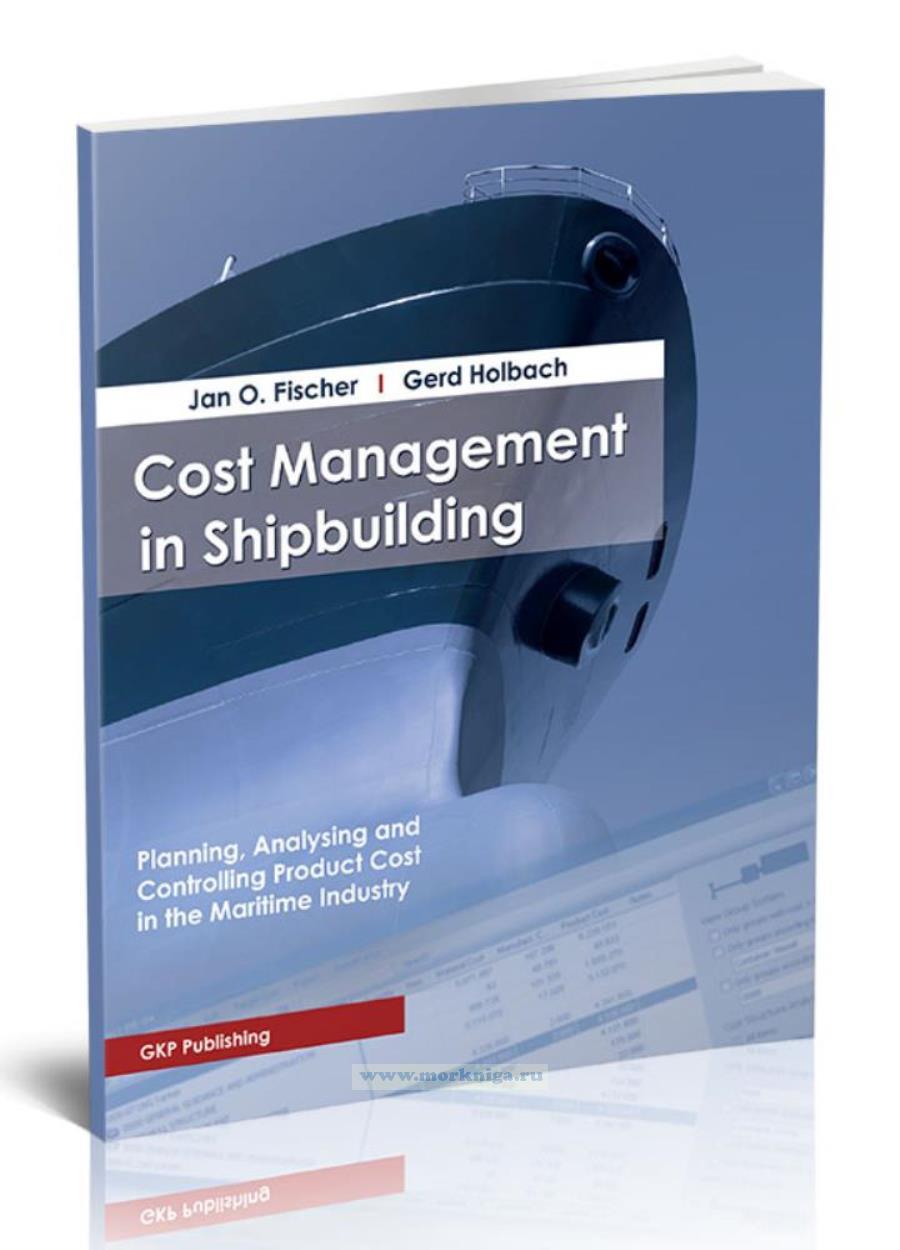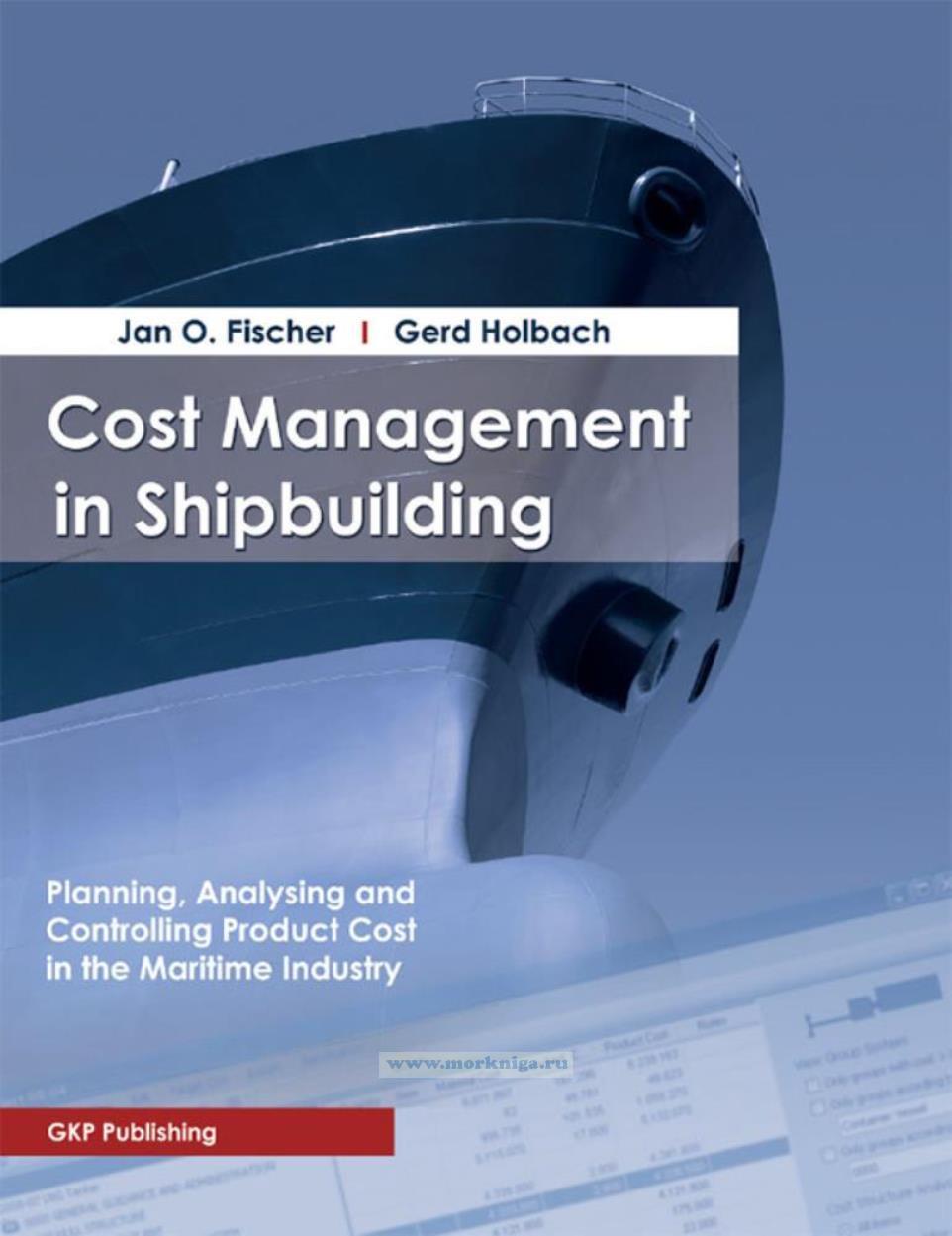Сб с 10 до 16
Cost Management in Shipbuilding/Управление затратами в судостроении
Книга на английском языке.
Global competition in the shipbuilding industry, which is continuously intensifying due to the entry of developing countries into the shipbuilding market, leads to decreasing margins and enormous cost pressure in this industry. The disappearance of numerous smaller shipyards as well as the big players reducing their activities of new ship building indicate the need for measures to counteract this cost pressure
The first oil crises in the 1970’s and later oil price increases have substantially increased the importance of operating costs and the life cycle costs. Even if the significance of operating costs has sometimes temporarily waned in the face of periodic price reductions, the current state of limited resources now requires the integration of the entire life cycle of a ship into cost management
This book was written in light of this situation. Our goal is to demonstrate how effective cost management strengthens and ensures a manufacturer’s competitiveness in the maritime industry. To do so, we first provide an overview of the current state of cost management in the shipbuilding industry, showing the weak points in current methods, processes and systems. The book then shows how planning, analysis and management of costs should ideally occur with a focus on the cost management system «costfact». This system has been developed specially for the maritime industry and enables users to capitalize on the enormous potential arising from cost-oriented design and engineering
Contents
1 Cost Management is the Key to Competitive Shipbuilding
2 Current Cost Management Situation in Shipbuilding
2.1 Cost Management Organization and Processes
2.1.1 Specifications as the Basis of Cost Planning
2.1.2 Cost Planning in Building Group Systems
2.1.3 Cost Management based on Organizational Structure
2.1.4 Cost Planning, Analysis and Management Processes
2.2 Cost Management Methods and Instruments
2.2.1 Cost Indexes for Cost Prognosis
2.2.2 Life Cycle Costing
2.2.3 Application of the Allied Naval Engineering Publication (ANEP)
2.2.4 Managing Cost Information
3 Relevant Terms and General Methodological Foundations
3.1 Costs and Cost Calculation
3.2 Cost Prognosis based on Regression Analysis
3.3 Incorporating the Error Compensation Effect
3.4 Identifying Cost Drivers
3.5 Target Costing
3.6 Calculating the Life Cycle Cost
3.6.1 Financial Mathematics Principles
3.6.2 Incorporating Uncertainty
4 The costfact Software System
4.1 System Objectives
4.2 System Structure and Administration
4.3 Calculation Structure Set-Up and Administration
4.3.1 Overview
4.3.2 Importing a new Building Group System
4.3.3 Building Groups System Administration
4.4 Project Creation and Administration
4.4.1 Creating a Project
4.4.2 Project General and Basis Data
4.4.3 Project-Specific Manufacturing Hourly Rate
4.4.4 Project Management
4.5 Integrating Technical Attributes
4.6 Analytic Cost Planning
4.6.1 Overview
4.6.2 Project-Specific Expansion of the Building Group System
4.6.3 Similarity Calculation
4.6.4 Detailed Cost Planning
4.6.5 Documentation of Planning Steps
4.6.6 Risk Analysis
4.7 Statistical Cost Planning
4.7.1 Defining the Regression Parameters
4.7.2 Selecting Reference Projects
4.7.3 Calculating the Regression Function
4.7.4 Applying the Regression Function
4.8 Integrating Specification and Calculation
4.8.1 Building Group-Related Specification Input
4.8.2 Generating and Using Text Modules
4.8.3 Import of Specifications from Word Documents
4.8.4 Outputting Specifications as Text Documents
4.8.5 Specification Display in Calculations
4.8.6 Consistency Check between Calculation and Specification
4.9 Target Cost Control
4.9.1 Project Controlling: Target Cost Attainment
4.9.2 Online Project Status Query
4.10 Cost Analysis
4.10.1 Integration of Actual Costs
4.10.2 User-Defined Cost Display
4.10.3 Cost Structure Analysis and Deviation between Budget and Actual Costs
4.10.4 Change Proposal Management
4.10.5 Identifying Cost Drivers
4.10.6 Cost Benchmarking through Project Comparison
4.10.7 Function Costs Calculation
4.11 Converting Projects into alternative Building Group Structures
4.12 Calculation Export
4.13 Cost Reporting with the costfact Basis Version
4.14 Life Cycle Costing
4.14.1 Measuring Life Cycle Costs
4.14.2 Project Evaluation and Comparison
4.14.3 Addressing Uncertainty
5 Appendixes
5.1 Glossary of Terms and Definitions
5.2 List of Figures
5.3 List of References
5.4 Building Group System ESWBS
5.5 About the Authors

